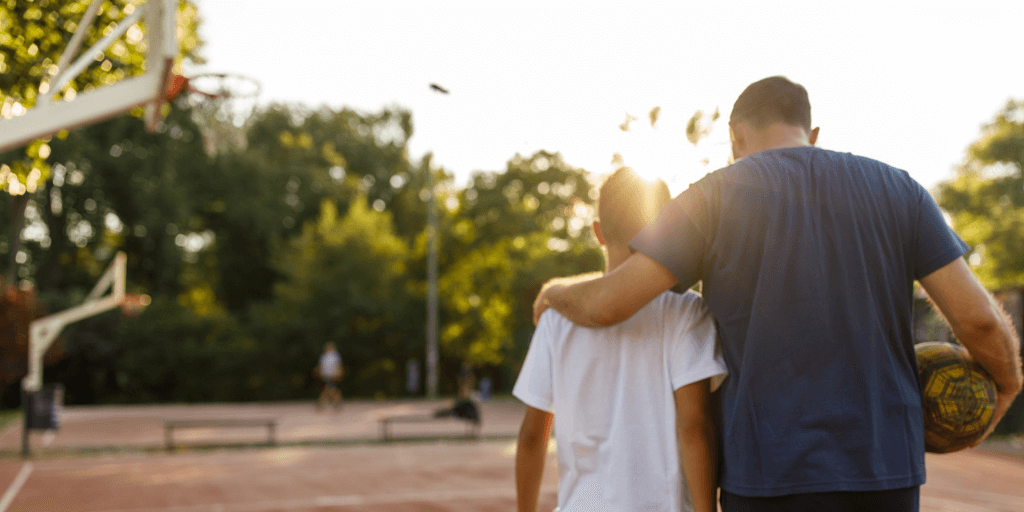
Establishing safe relationships with young people who have experienced trauma
‘Establishing safe relationships with young people who have experienced trauma’ blog article was written by Emily Ings, Therapeutic Specialist, Out of Home Care at Australian Childhood Foundation.
I was new to the world of being a Therapeutic Specialist and was allocated to work with a grandmother who was the carer of two brothers, one 12 and one 14 years old. I was eager to start.
“Where would we begin?” I was wondering… The boys’ Case Manager told me that it was unlikely that I would be working directly with the boys, I would be told to “F*** OFF”, and have the door slammed in my face, but also told “Don’t take it personally”, that was the way things were when workers came to the boys’ house.
The first time I went to visit the family, I was greeted warmly by the grandmother and a funny, tall 12-year-old. After a few calls to the 14-year-old, Shane*, a scary clown emerged from his room. You know those scary clown masks designed to haunt you in your dreams? He was wearing one of those. The scary clown slowly sat down next to me.
He said nothing. He slowly turned his clown head to look at me and I nervously laughed, commenting that I wasn’t expecting to meet a scary clown today, but it was certainly a “pleasantish” surprise.
Eventually, the scary clown took off his mask and asked if I wanted to join him and his brother for a game of handball in the backyard. After a few rounds of being beaten, the former scary clown turned 14-year-old handball champion asked if I wanted to come back next week for a game of Uno. I glanced at his grandmother, who was expressing her excitement that Shane seemed interested in engaging, through two silent but strong thumbs up.
So began what would be two and a half years of weekly sessions with this young person.
Shane would only really leave his house to go to school or the occasional dinner out with his grandmother and brother. Shane would want our sessions to be in the dining room of the house. I would arrive, the grandmother would answer the door, call Shane, and he would shout back, “I’m COMING, WAIT!”.
For the first eight or so months of our work together, Shane needed to maintain control of what we did and what we spoke about. I learned how to play Magic the Gathering and chess; he learned that there were people in the world who would turn up every week rain, hail, emotional explosions, or shine.
I learned so much through this working relationship.
The biggest learning was that establishing felt safety in a relationship for a young person who has experienced trauma at the hands of adults is slow but possible. I learned to gauge where Shane was at on any given day by how much control he needed in our sessions.
As our time working together progressed, Shane would allow me to introduce the occasional activity, most times reluctantly and with a wry smile. For about a year we would start every session with Celebrity Heads.
We were creating funny stories and in-jokes about our Celebrity Heads characters. I was learning that my opponent had magical guessing powers; he was learning that sharing laughs and shared language with an adult could feel good.
After about twelve months of sessions, Shane would be eager to show me the computer games he had created. He was now opening the door when I arrived at his home and would pop into his room to grab his laptop. He would ask for ideas from me and would go away that week and create a game based on our shared ideas! We would meet and I would marvel at his creativity, skills, and ability to turn an idea into something tangible, something that people could enjoy together.
I learned about coding; he learned to accept the positive version of himself that others saw in him.
After a year and a half of spending time together, Shane had started extracurricular theatre classes, had found a casual job, and had asked his grandmother if he could start seeing a psychologist; someone who he could speak to in a place outside the home about his experiences of trauma. He told me he wanted our sessions together to remain the same, that when we spent time together, he could feel himself become calm like it was a reset for him.
It made me think that after all that time we spent together, sometimes unsure of the direction we were going, it was time so well spent because we were expanding a whole new experience of trust and safety in the form of a consistent and attuned relationship.
*Names have been changed to protect the identities of children. Thank you for your understanding and support. If you, or someone you know is in immediate danger, call 000. For confidential support regarding family violence, call 1800RESPECT (1800 737 732). To report concerns relating to a child, please contact Crime Stoppers on 1800 333 000.
Subscribe to the Professionals Newsletter
Join our community of more than 40,000 professionals from around the world who receive our weekly newsletter containing articles. Our newsletters help connect you to our blog, research, and free resources as they are produced. We also keep you informed on training opportunities including access to experts in the field, webinars, international speaker tours, conferences and more.
